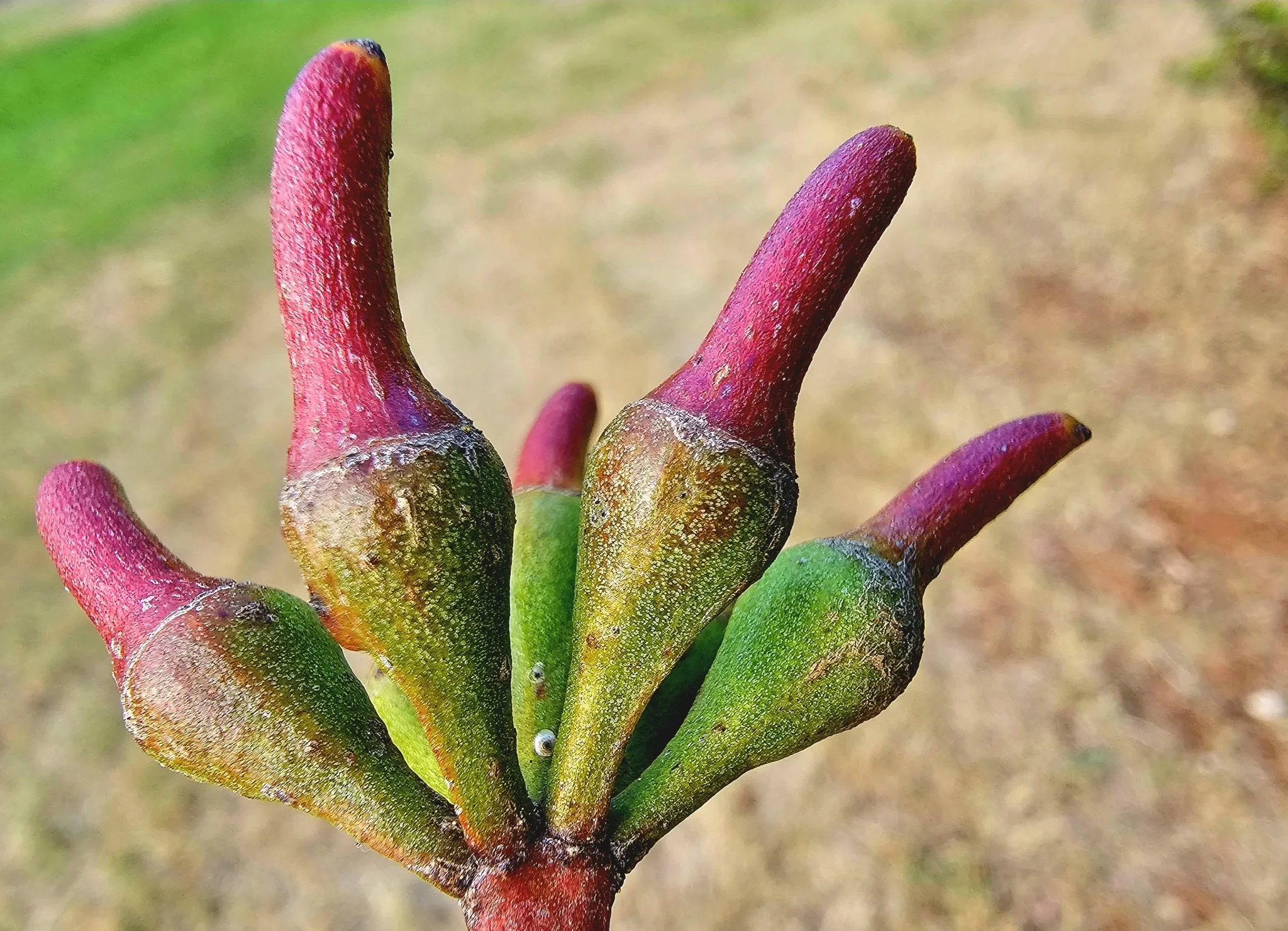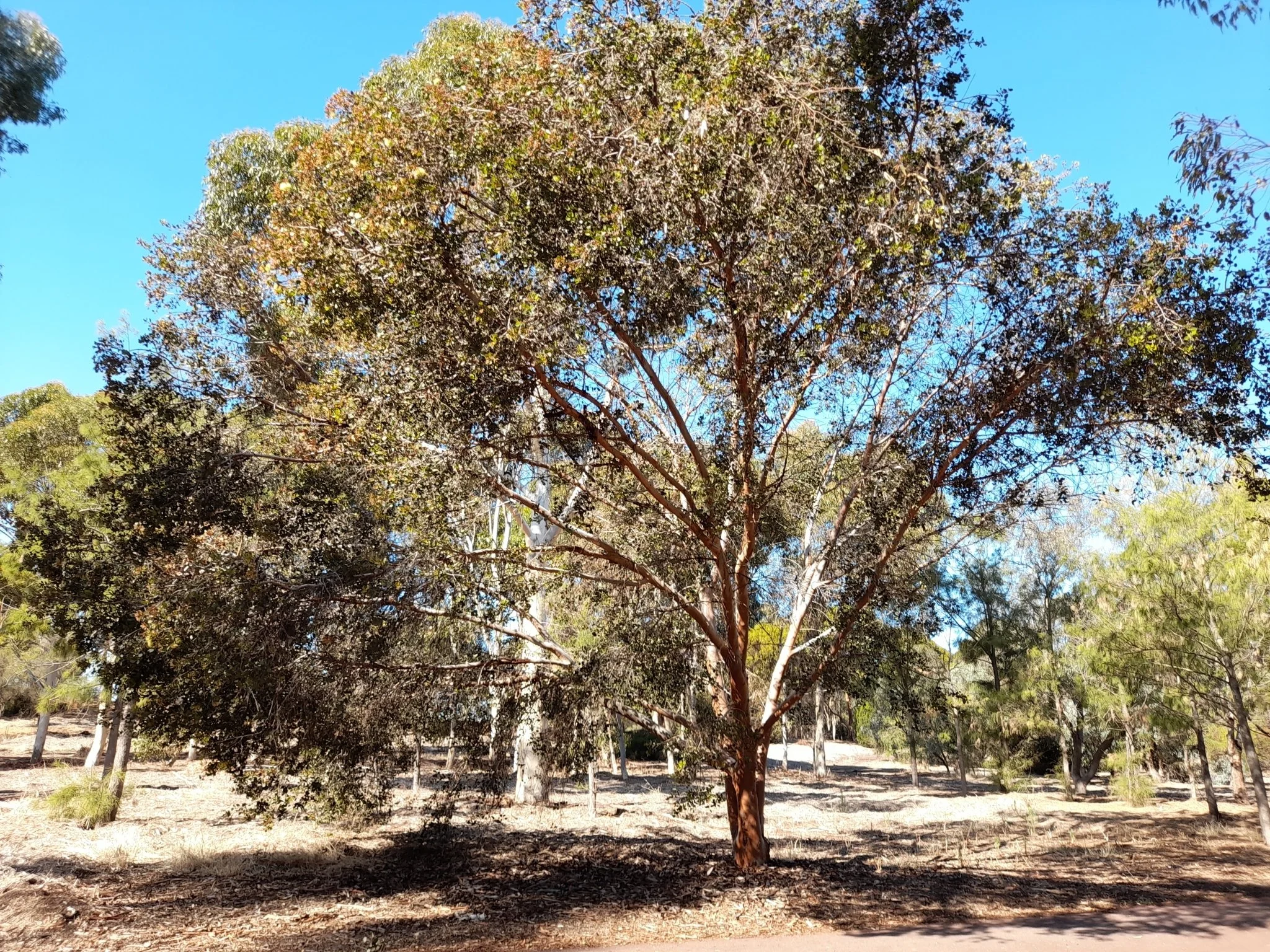by Shane Sody
Your Adelaide Park Lands are home to many kinds of plants, but it’s not always easy to identify them.
We’re gradually building a resource (“Know Your Park Lands Plants”) to help you identify and cherish the plants within your Adelaide Park Lands. Today, we take a close look at a plant that shares a name with one of Australia’s most beloved creatures.
The Round-leaved moort is also known by the scientific name Eucalyptus platypus. It’s native to Western Australia, and in its native range it’s listed as “endangered” on the IUCN “Red List” of threatened species.
Nevertheless, there are at least four locations where you can see it in your Adelaide Park Lands.
The Round-leaved moort is in flower in the summer months (December to February) when it will look like this:
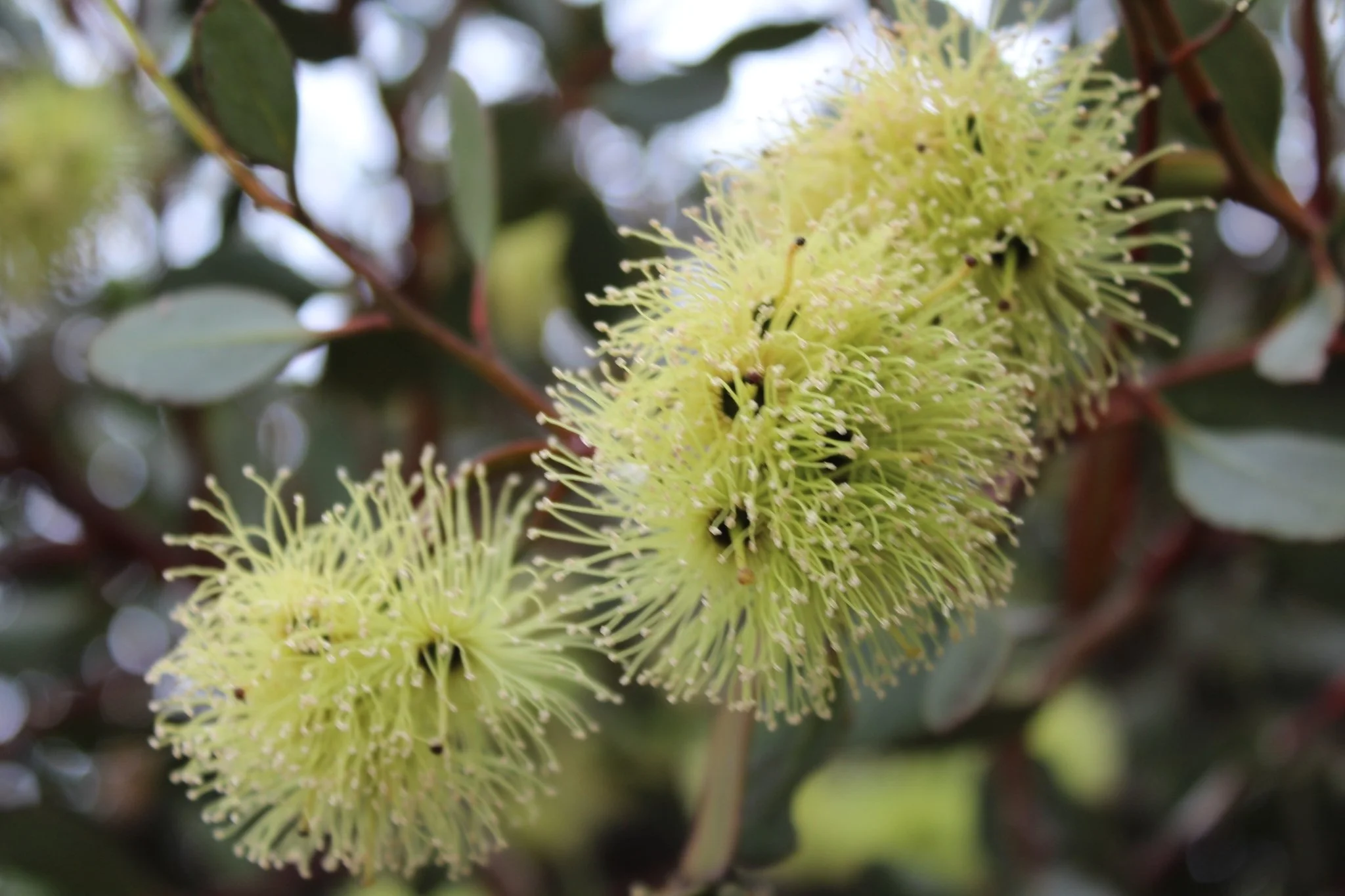
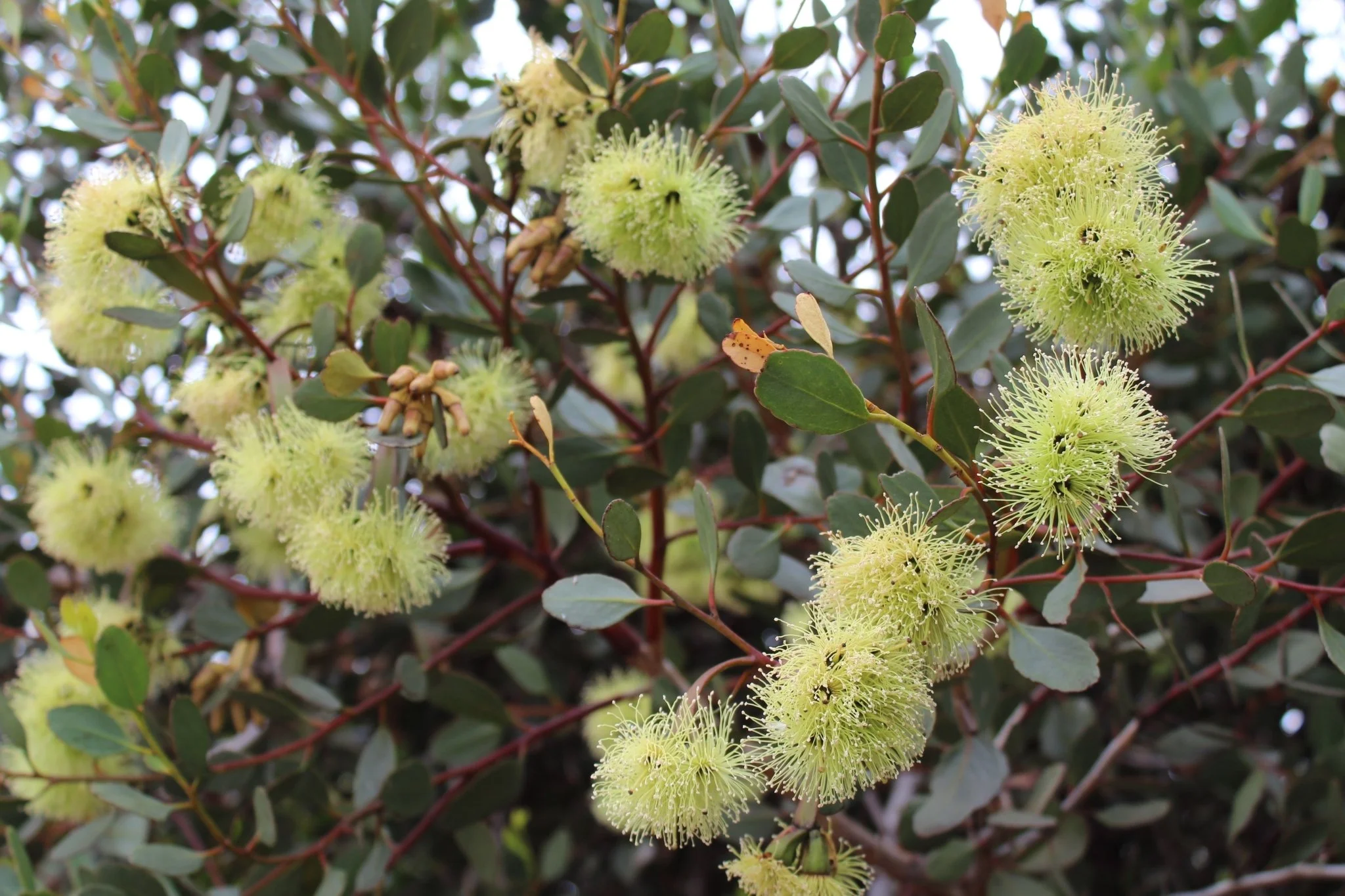
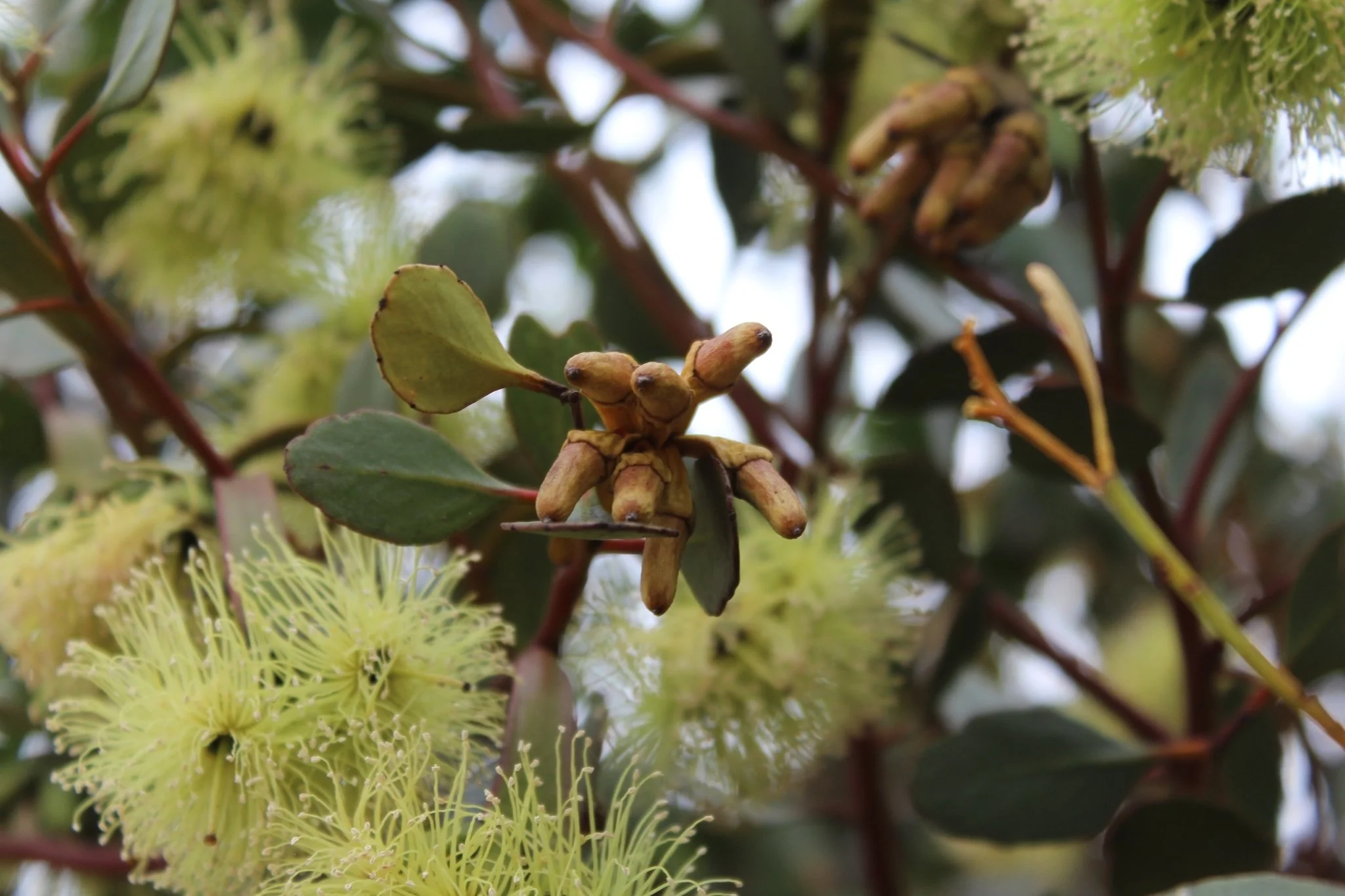
The flowers are nor always this creamy-yellow colour. In some specimens they can be pale greenish.
For the rest of the year, when not in flower, it has a somewhat different appearance.
Round-leaved moort (Eucalyptus platypus) pictured in Denise Norton Park / Pardipardinyilla (Park 2 of your Park Lands). Pic: @shane_sody iNaturalist.
This sighting was made in Lefevre Park / Nantu Wama (Park 6):
The fruits of the Round-leaved moort (Eucalyptus platypus) pictured in Lefevre Park / Nantu Wama (Park 6 of your Park Lands). Pic: @philip-green iNaturalist
So why is it called “E. platypus”?
The name platypus derives from Greek platys (“broad, flat”) and pous (“foot”), a formation often meaning “broad-footed”. “Platypus” was historically used as a generic term in natural history to mean “flat-footed”.
So the scientific name of this plant references the broad, flattened “peduncle” (i.e. the stalk that bears the flowers) and the broad adult leaves that are characteristic for the species. You might say they are similar to the broad, flattened tail of the platypus.
The leaves of the Round-leaved moort (Eucalyptus platypus) and (inset) a platypus tail.
The leaf shape and thickness is one of the ways that you can tell the round-leafed moort from other similar eucalyptus species.
It is a mid-sized tree, growing only up to eight metres.
A large full-grown Round-leaved moort (Eucalyptus platypus) pictured in Ellis Park / Tampawardli (Park 24 of your Park Lands). Pic: @pam275 iNaturalist
It has a distinctive combination of thick, often nearly circular adult leaves, dense low-growing habit and smooth, peeling bark.
LEFT: The bark of the Round-leaved moort. Pic: Michael Hains - Atlas of Living Australia
RIGHT: Round-leaved moort in blossom in Ellis Park / Tampawardli (Park 24 of your Park Lands). Pic: @pam275 iNaturalist
Where can you see it?
In its native range, in the south-west of Western Australia, it is usually found growing in heavy clay or gravelly soils in its native range, in an area from Albany east towards Esperance and inland to the WA Goldfields. In some places it forms dense stands.
Because it’s hardy (tolerant of frost, drought and heavier, clay soils) and attractive, the Round-leaved moort has been planted and naturalised in other parts of southern Australia including as a windbreak, for screening, and in parks and gardens. Because of its dense habit it has been used in revegetation and shelterbelt plantings.
It responds well to pruning and coppicing; and when in blossom, is attractive to bees.
In some regions (for example parts of South Australia such as the Eyre Peninsula) it has been recorded as naturalising or behaving as a weed, where planted and then spreading into disturbed native vegetation.
Known locations of the Round-leaved moort (Eucalyptus platypus). Image: Atlas of Living Australia.
In your Adelaide Park Lands, these are the only sightings recorded (so far) on iNaturalist:
Map: iNaturalist
See the other plants featured in this series here:
https://www.adelaide-parklands.asn.au/know-your-park-lands-plants



